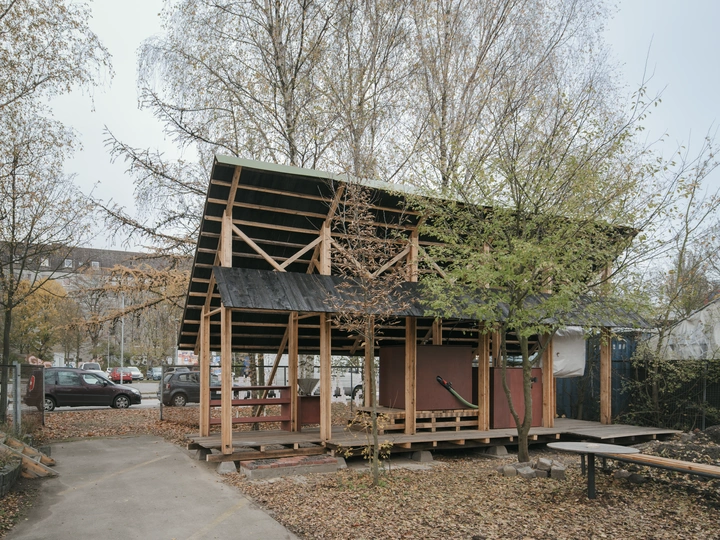ZINNERGIE - an urban biogas plant

Ex_Kurs is a transdisciplinary summerschool for collaborative designing, thinking, planning and building. In the 2021 edition a group of professors and students from different fields of the universities Hafencity Universität Hamburg, Technische Universität Hamburg, Hochschule für Angewandte Wissenschaften Hamburg, Universidade Autónoma de Lisboa as well as pupils from the Stadtteilschule Wilhelmsburg and residents and experts from the neighborhood of Wilhelmsburg took place in the summerschool.
The increasing climate problems call for a more conscious and responsible approach to the planet and its resources. Especially, the fields of building production and architecture are challenged by strong demands for more sustainability. For the building sector, one of the main important aspects is to move towards circular thinking, in which buildings can take on new uses. Structures can be adapted to changing requirements. Materials are durable, can be reused, reassembled or even be reintegrated into ‘nature’.
The project ZINNERGIE explores the potential of circular concepts by building a small urban biogas plant using exclusively discarded materials. In this undertaking, we tried to manifest the reuse of materials as a tangible and bodily experience of the architectural artefact itself.
Demolished houses functioned as material archives and suitable building materials were identified and dismantled. We examined and collected discarded building materials from material assortments, whilst existing remainders on site were considered as potential building materials.
The actual designing began by exploring and getting to know the given materials. We tested the inherent properties and structural capacities through the physical interaction with the materials following the aim of transforming the discarded materials into aesthetic and efficient building elements.This is how steel boards of a former industrial shelf became roof cladding or altered wooden boards got a new finishing by making use of the japanese Yakisugi method of preserving wood by charring it with fire. This process resulted in a robust and adaptable architecture that can host and even exhibit the technical infrastructure of the biogas plant as well as the actions connected to it. As a learning and teaching object it wants to convey circular economy as a tangible experience. Materials and joints are kept raw and generic in order to allow a future disassembling and a reuse of the materials.